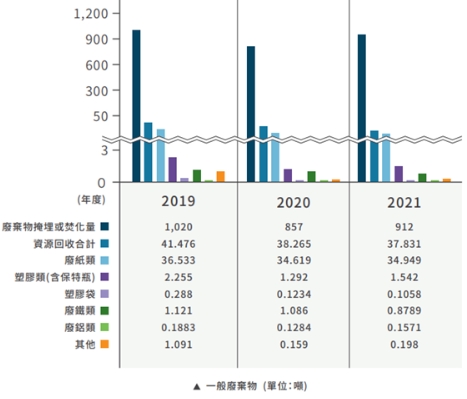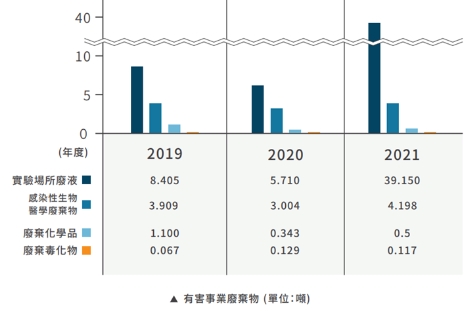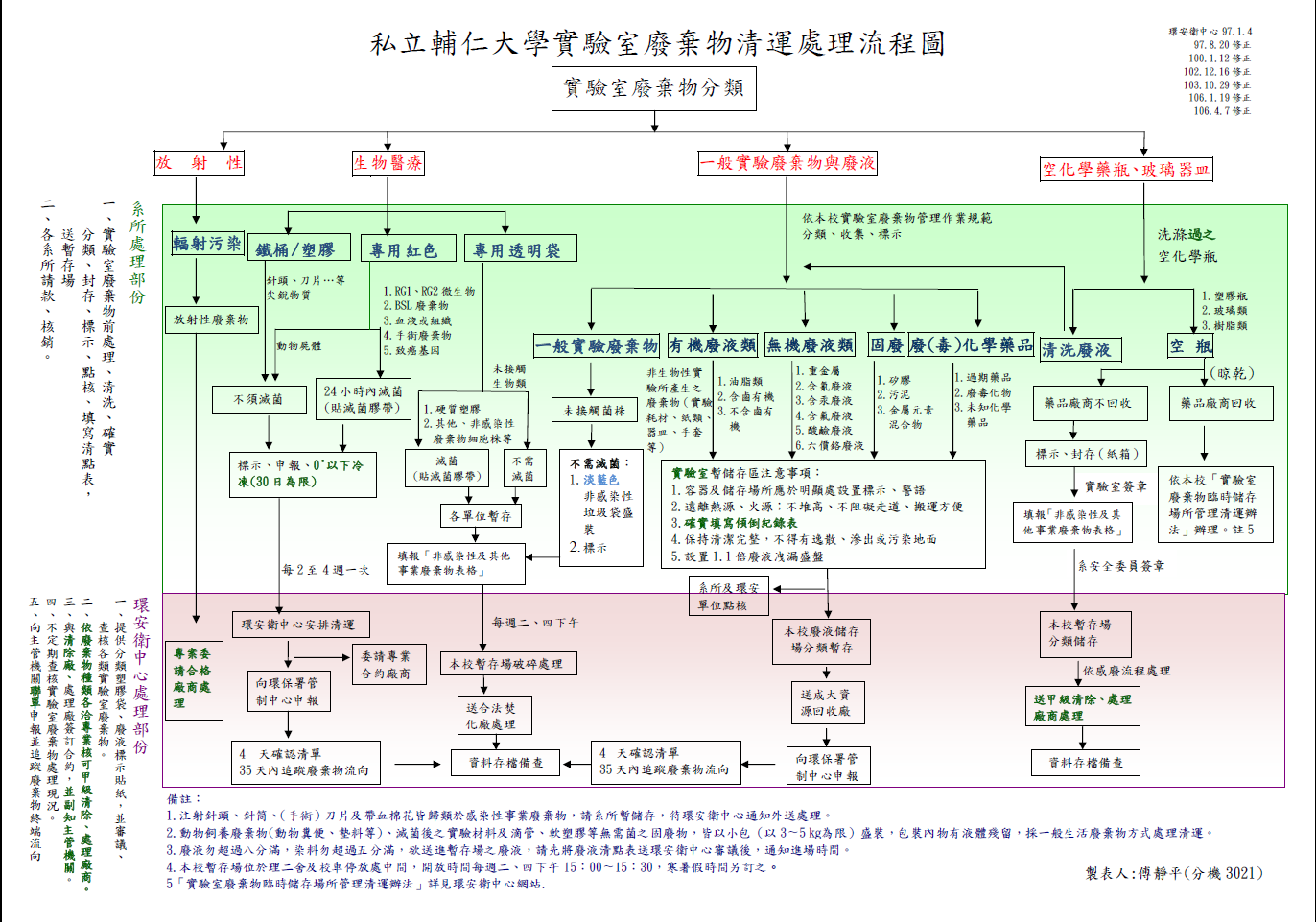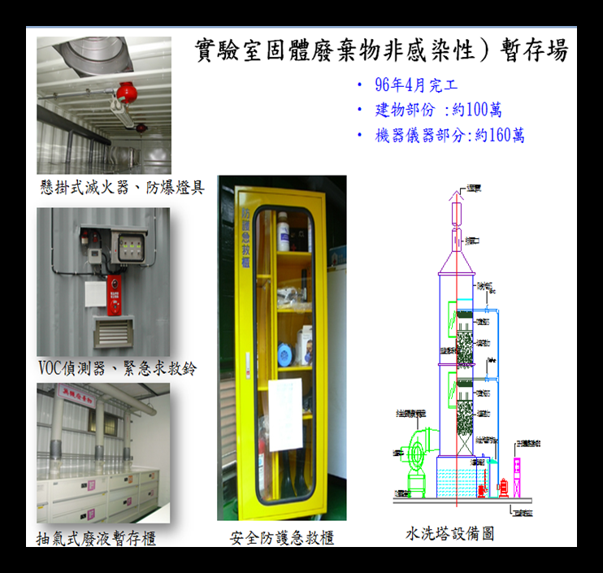




Statistics collected on general waste throughout the school year of 2021 are as follows:
- Amount of waste generated: 949.831 mt
- Amount of waste recycled: 37.831 mt
- Amount of waste sent to landfills: 912 mt
Statistics collected on hazardous industrial waste throughout the school year of 2021 are as follows:
- Amount of biological and medical waste: 43,965 kg
- Amount of hazardous industrial waste: 4,198 kg
- Amount of scraped toxic chemicals: 617 kg
Statistics collected on general waste throughout the school year of 2020 are as follows:
- Amount of waste generated: 933.902 mt
- Amount of waste recycled: 40.172 mt
- Amount of waste sent to landfills: 893.730 mt
Statistics collected on hazardous industrial waste throughout the school year of 2020 are as follows:
- Amount of biological and medical waste: 3,466 kg
- Amount of hazardous industrial waste: 13,656.8 kg
- Amount of scraped toxic chemicals: 238.523 kg
Statistics collected on general waste throughout the school year of 2019 are as follows:
- Amount of waste generated: 1061.476 mt
- Amount of waste recycled: 41.476 mt
- 送Amount of waste sent to landfills: 1020 mt
Statistics collected on hazardous industrial waste throughout the school year of 2019 are as follows:
- Amount of biological and medical waste: 2,311 kg
- Amount of hazardous industrial waste: 5,744.8 kg
- Amount of scraped toxic chemicals: 82.933287 kg
Report:
- 本校2021永續報告書105-107有前開數據與廢棄物相關敘述
- 本校2020永續報告書108-111有前開數據與廢棄物相關敘述
- 本校2019永續報告書118-120有前開數據與廢棄物相關敘述
In 2001, FJCU established the "Code of Practice for Laboratory Waste Disposal in Fu Jen Catholic University"
and various environmental protection or safety and health policies and specifications: Carry through self-management, promote energy conservation and waste reduction, actively prevent accidental pollution, and strive for risk reduction management.
- 歷年廢棄物管理與處理流程(包含處理要點、步驟、分類方法、清運步驟等),皆公告於本校環境保護安全衛生中心的公開平台
- 本校環境保護安全衛生委員會設置辦法與委員名單
- 本校環境保護安全衛生委員會議歷年紀錄
- 感染性生物、醫學廢棄物已於本年度2/15委由合格之廠商:嘉德技術顧問股份有限公司清除,並交由嘉德創資源股份有限公司、日友環保科技股份有限公司處理。
- 有害廢棄物已於本年度1/20委由合格之廠商:宏揚環保工程有限公司清除,並交由國立成功大學環境資源研究管理中心資源回收廠處理。